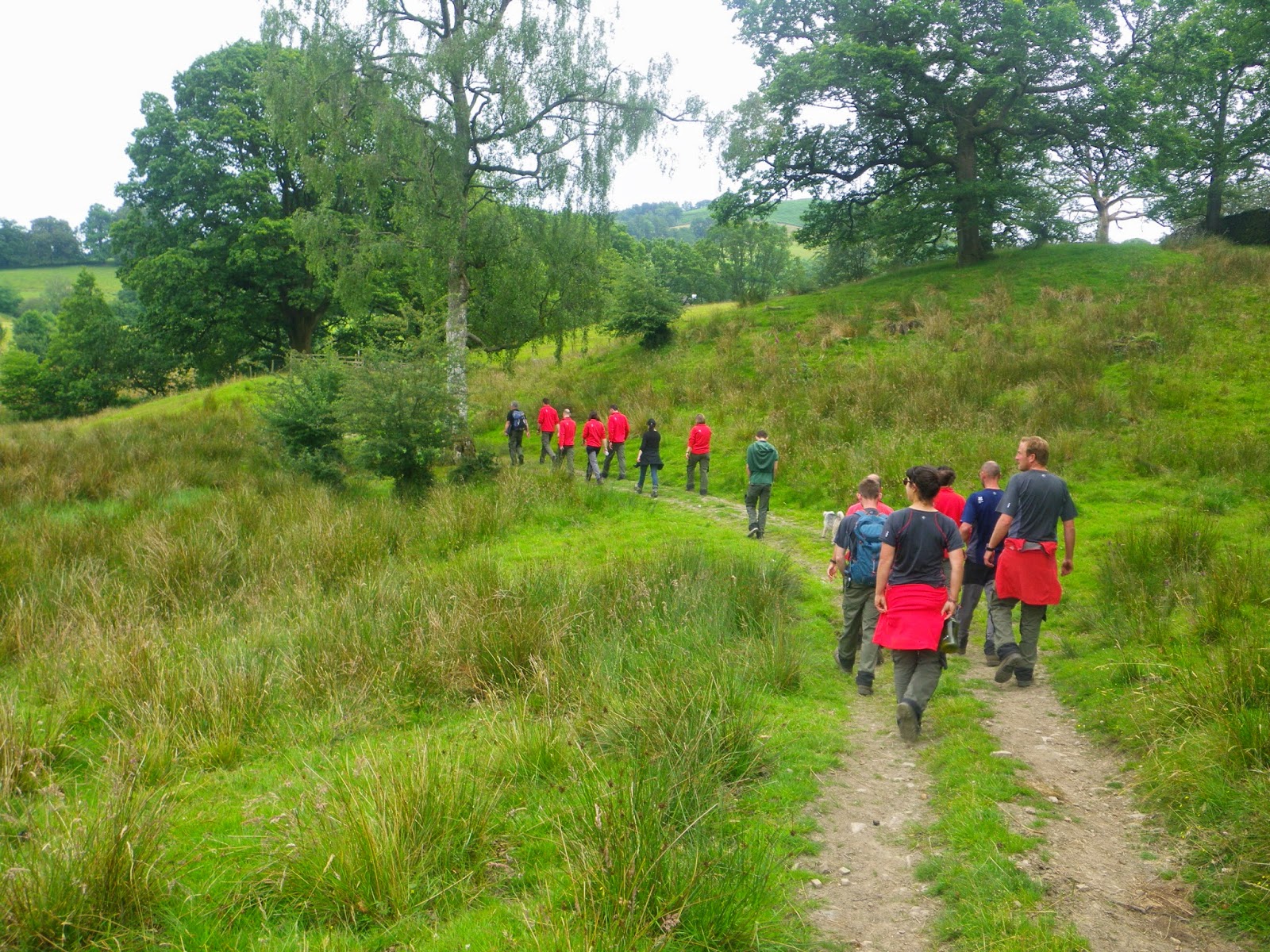As rangers, the variety of
places we work and the type of work we carry out varies a lot. It almost
sounds cliched we say it so often. Whether that is rebuilding a dry stone wall,
fixing a gate, filling in potholes, leading a guided walk, doing some 50 things
activities with groups of children or presenting our special places to the highest
standard (that includes the toilets!). But the most important part of our role
is sharing this love of special places with all our visitors.
When I first started as a ranger, I was quite daunted by how much knowledge some of the other rangers had about their patch, ecology and the natural environment. From my volunteer days, I was under the impression that the role was very much about getting your hands dirty through the variety of conservation work such as rhododendron bashing and drainage clearance. But as it turned out it was about so much more than that!
Every ranger brings their own
special skills and interests to the job and the South Lakes ranger team is no
exception. They have a wealth of knowledge and experience but historically we
have not been great at sharing this knowledge around the team (great at sharing
with the public!). After lots of ranger chitter-chatter, we came up with a solution -
‘Walking in the wild side’.
 |
| Rangers learning about the geology of the Coniston coppermines valley from a very knowledgeable, local historian, Mark Scott |
The idea is for a ranger to
run an afternoon session of his or her choosing on the South Lakes patch, once
a month by getting out and in true Lou Reed style ‘walking in the wild’ side!
The topics so far have ranged from dragonflies and damselflies, the landscape
history and ancient trees of Tarn Hows, the history of the Coniston Coppermines and a historical walk around Blelham
Tarn. It seems hard to see how we can justify the ranger time initially when we
look at the mounting work such as fixing wall gaps, repairing fences, filling
in potholes, strimming grass. Justification is easy – how can we share our love
of special places with our visitors if we don’t spend the time learning about
them?
Many people tell me that you
become knowledgable over time, by picking up tid-bits and simply asking lots
of questions. I find the best way to learn is to get out and hear passionate
people talking about the subjects that they care about!
The idea is not only to share
this knowledge but also to allow individuals to pursue their own interests and
learn about a topic to share with everyone else. We have plenty more planned in
for the future including meadow wildflowers, Beatrix Potter and her farming
legacy, traditional use of woodlands and woodland crafts. I am hoping to run a
‘walk in the wild side ‘ by sharing (and improving!) my knowledge of Lake District geomorphology… The knowledge of the South Lakes ranger team as a
whole is improving rapidly!
 |
| Rain doesn't stop play - learning about the industrial archaeology and history of the Coniston coppermines |
One of the National Trusts’ aims is to pass on a richer, healthier
natural environment for future generations. This starts with sharing our
knowledge and interests with everyone we meet... We want to help people to recognise the true value of our countryside and have a role in
caring for it, for example to understand the impact that wild camping and off-road
driving can have on our special places.
So if you see a ranger in red
out and about, ask them what they have been learning about recently!


No comments:
Post a Comment